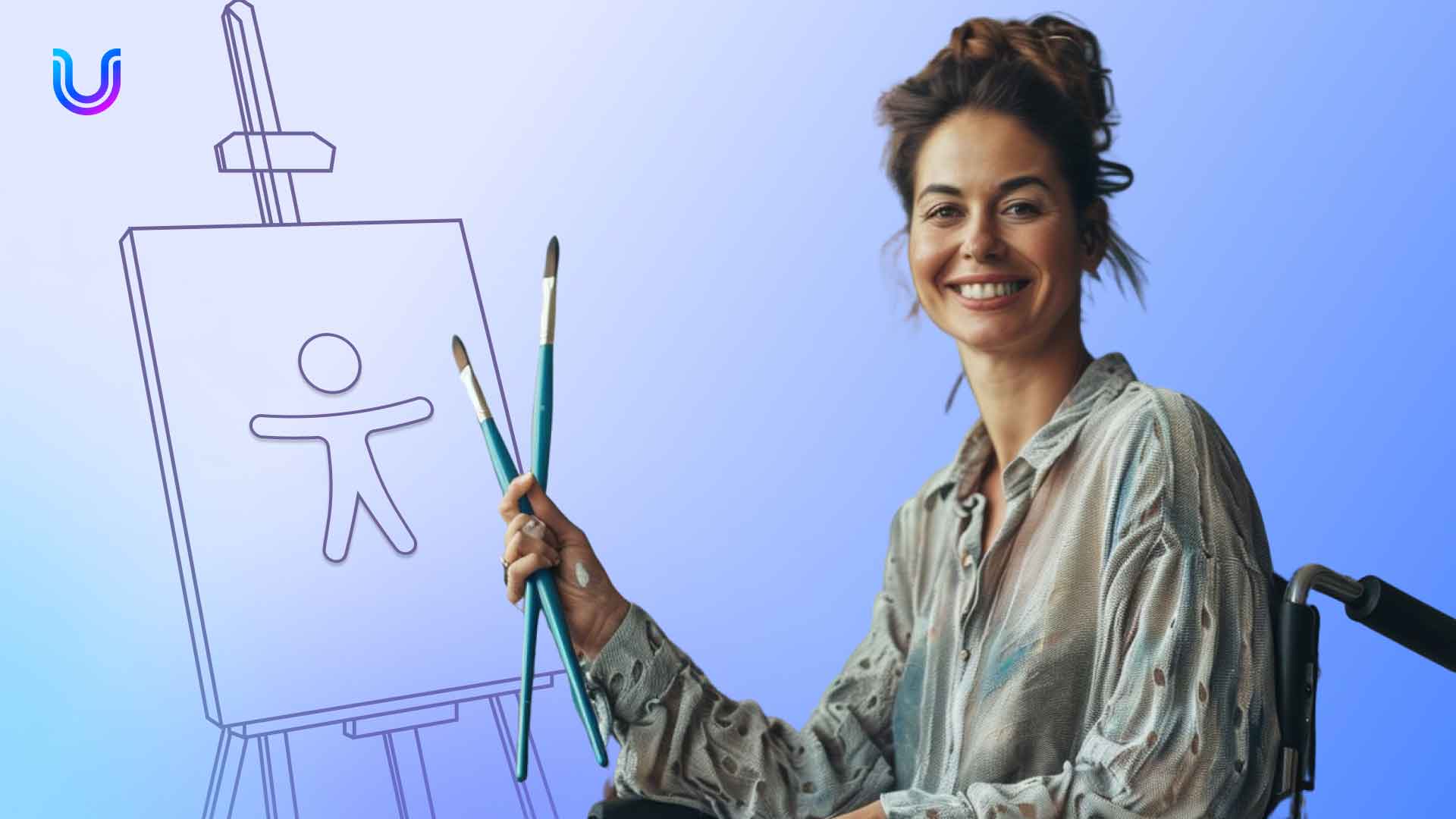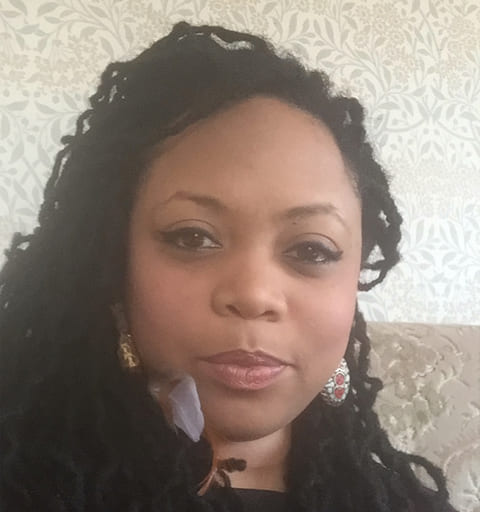Creating inclusive spaces: showcasing artists with disabilities

Art, a universal language, connects us all and reflects our shared humanity. This blog celebrates artists who, through their disability, have not only reshaped the contours of artistic creation but have also shown us the unparalleled strength of the human will. Their lives and works exemplify how creativity can flourish under any circumstance, and how artists with disabilities can use their artwork as vehicles for personal and collective empowerment.
We look into the lives of artists who have lived and are living with disabilities, illuminating how their unique experiences have infused their art with a unique depth of perspective and innovation. These artists, through their commitment to self-expression, challenge preconceived notions of what it means to create, and who can be a creator. We will explore how these artists have made accessible art, illustrating the importance of creating spaces where art can be experienced by all.
In celebration of 6 artists with disabilities
Let’s highlight seven remarkable artists who not only carved a niche for themselves within the art world but have also defied various disabilities, using their unique perspectives to create profound works of art:
1. Frida Kahlo
Frida Kahlo is possibly one of the most famous artists with disabilities. Her story is one of talent and resilience. Struck by polio as a child, she started painting while recovering from a horrific bus accident that left her in a lifetime of pain and medical complications. Frida used her experiences to create a vivid, colorful artwork. Many were self-portraits that reflected the challenges she was living through and the disabilities she was experiencing. Frida’s work is a lesson in honesty; she unapologetically put her physical and emotional scars on display for the world, making her an inspiration for artists with disabilities and a testament to the therapeutic power of art.
2. Chuck Close
Art and disability are deeply connected to in Chuck Close’s journey, Chuck Close was an inspirational artist known for his massive-scale portraits despite severe paralysis. He ingeniously adapted his painting technique to overcome his disability, demonstrating that physical limitations do not constrain creativity, embodying the triumph of the human spirit through his detailed, grid-based artwork.” His heritage is a dual narrative of artistic genius and the unyielding power of the human spirit in the face of disability.
3. Stephen Wiltshire
Stephen Wiltshire is another famous person living with disabilities. Diagnosed with autism as a youngster, he faced communication hurdles but discovered his true language in the world of art. Now, Stephen wows the world by creating intricate cityscapes of urban areas such as New York, Tokyo, and London, all from memory after a mere glance. Stephen’s story is also about his experience of autism. His unique condition has become his superpower, earning him global acclaim and an MBE for services to art.
4. Neil Harbisson
Neil Harbisson, born in Barcelona, is the world’s first cyborg. He uses a special antenna implanted in his head to “hear” colors that are beyond what we can see naturally. This means he can turn things like phone calls, music, and images into sounds he can hear. He started this because he was born unable to see colors. His antenna even lets him see colors that are invisible to most people, like infrared and ultraviolet. Neil’s work in enhancing human senses with technology is just the beginning of what he can do. He’s turning invisible colors into sounds, making art more accessible and expanding sensory experiences.
5. Yinka Shonibare CBE
Yinka, a British-Nigerian artist, explores how history, like colonialism and its aftermath, connects with our modern world influenced by globalization. He expresses these ideas through painting, sculpture, photography, and film. At 19, a rare infection left him in a wheelchair, but it hasn’t stopped him. He uses vibrant African textiles called ‘Dutch wax’ to challenge stereotypes and discuss cultural identity. His disability shapes his unique viewpoint and creative approach, adding depth to his art’s accessibility and storytelling.
6. Ngozi Ugochukwu
Ngozi is a self-educated photographer whose artwork has been exhibited at HOME, an international contemporary art hub in Manchester. She contributed to a British Council symposium in Hong Kong, which delved into the significance and influence of the arts on the elderly, the youth, and individuals with disabilities. Her “Stairs Project” casts an aesthetic spotlight on this commonly ignored architectural element, viewed through the distinctive lens of her wheelchair.
As we celebrate the creativity of these artists with disabilities, let’s now delve into how their groundbreaking work continues to reshape the concept of accessibility in the art world.
Accessible art: how artists are redefining inclusion
Artists with disabilities have been trailblazers in making art accessible, not only for themselves but for everyone. They are reshaping the concept of accessibility in the art world by pioneering innovative tools, inclusive spaces, and strategies that prioritize diverse abilities such as:
- Inclusive Art Spaces: Some artists are advocating for and creating physical art spaces that are fully accessible to individuals with disabilities. This includes wheelchair ramps, tactile art exhibits, and sensory-friendly environments, making art galleries and museums more welcoming to a wider audience.
- Digital Accessibility: Artists are leveraging technology to ensure their work is accessible online. They use alternative text for images, provide captioning for videos, and design websites that are compatible with screen readers, ensuring that their digital art is available to all, regardless of disabilities.
- Collaborative Art Projects: Many artists with disabilities collaborate with others to create inclusive art projects. These collaborations often involve artists from diverse backgrounds and abilities, fostering a sense of community and breaking down traditional barriers in the art world.
And yet, in many spaces, accessibility in art often remains overlooked. Building a more inclusive art world requires multifaceted efforts. It entails developing tools, spaces, and organizations that cater to diverse abilities, prioritizing art accessibility in our strategies. We must ensure that physical and digital doors are open for artists with disabilities, because accessibility in art is a fundamental human right, not a privilege,
Art and accessibility: is art for all achievable?
Many organizations, such as the Arts Council in England and the National Endowment for the Arts in the United States, are actively promoting accessibility in the arts. Despite these efforts, pressing challenges in art accessibility and inclusivity persist.
There are barriers in terms of awareness, infrastructure, and policy that still hinder the full participation and recognition of artists with disabilities. It remains vital to continue dismantling these obstacles to create an art world that is truly inclusive, where accessibility is not an afterthought but a cornerstone of the creative experience.
When exploring the issues surrounding art and accessibility, several key factors come to light:
1. Awareness and Education: There’s a significant gap in understanding the needs and capabilities of artists and audiences with disabilities. The cultural sector often lacks the necessary knowledge to create truly accessible environments. How can we bridge this knowledge gap to ensure art accessibility is ingrained within every aspect of the cultural sector, not as a special requirement but as a standard practice?
2. Physical Accessibility: Many art spaces, museums and other artistic institutions still face challenges in physical accessibility. This ranges from architectural barriers to the lack of adaptive tools that facilitate the creation and enjoyment of art. As the New York Times mentions, the simple act of visiting a museum remains a complicated endeavor for someone with a disability. What ways can we make museums more accessible? And how can we commit to reimagining these spaces and tools so that physical accessibility becomes a central aspect of art’s infrastructure?
3. Digital Accessibility: The shift toward digital has the potential to democratize access to art, but it also brings to light new levels of exclusion. Digital accessibility means creating digital content, apps and other assets that people with disabilities can easily navigate, understand, and interact with.
4. Economic Barriers: How can organizations alleviate the financial burdens that often impede disabled artists and limit their ability to create, showcase, and connect with broader audiences? It’s essential to recognize and address the frequent financial challenges that hinder disabled artists in expressing themselves and accessing wider artistic opportunities.
5. Policy and Representation: There’s a need for stronger policies that advocate for the rights and representation of disabled individuals in the arts. This includes leadership roles within organizations and decision-making processes that impact the sector. But do we sufficiently question who is crafting the policies and whether they truly reflect the diversity of the community they aim to serve?
Addressing these issues requires a concerted effort from all sectors of society—including governments, cultural institutions, the private sector, and the general public—to ensure that the arts are a domain where everyone can participate equally and fully.
UserWay: making the web accessible for all
While we’ve highlighted various ways in which physical spaces and creative communities can enhance accessibility in the art world, at UserWay, our mission is to bring inclusivity into the digital world. Leveraging the power of AI, UserWay’s Accessibility Widget is transforming web accessibility and can radically impact art-related digital spaces such as museum websites, gallery applications and platforms where artists can share their art online.
The Accessibility Widget has been installed on millions of websites across the globe and stands as the market leading accessibility plugin and compliance solution. It seamlessly adjusts to your visitors’ needs around the clock, offering instant accommodations for different disability profiles. With this solution in your digital toolkit, you can ensure that any audience can fully engage with art online, making the digital art experience universally accessible for all.
FAQs
What is the role of technology in making art accessible?
Artists are using technology to create inclusive digital art experiences, from alternative text and captions to accessible websites, ensuring that their work reaches a broader audience, including those with disabilities.
Why is digital accessibility in online art spaces important?
Digital accessibility ensures that everyone can engage with and appreciate art on digital platforms. It involves designing websites and digital art content that can be easily navigated, understood, and interacted with by individuals with disabilities, fostering inclusivity in the digital art world.
How can art and disability create a more accessible art world?
By actively involving artists with disabilities and prioritizing accessibility, the art world can become more diverse and inclusive, allowing art to be experienced by a broader audience and breaking down barriers.




Share